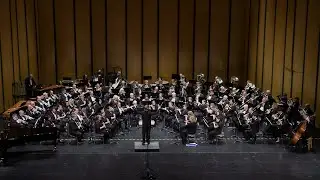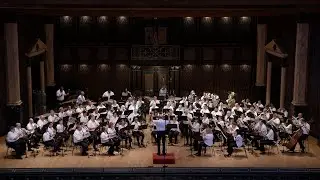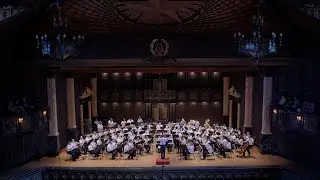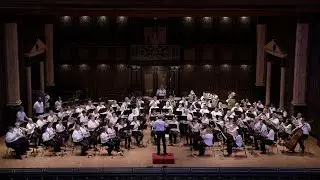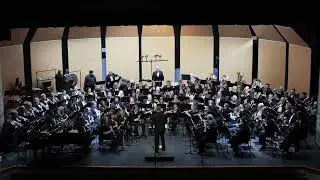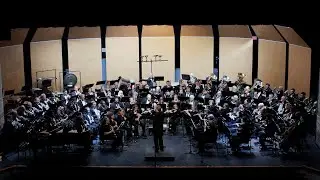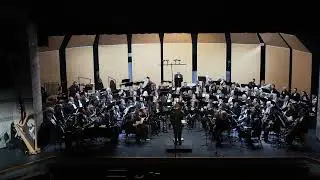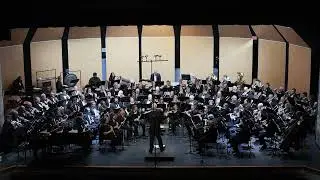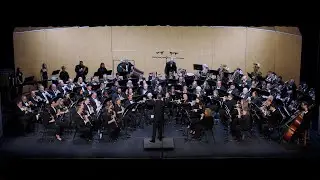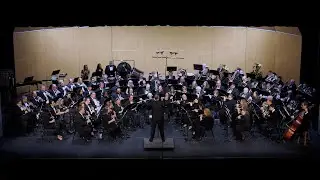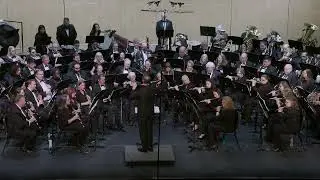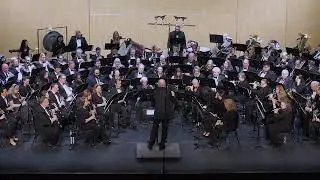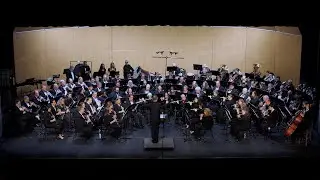Austin Symphonic Band Performing Down to the Sea in Ships
Austin Symphonic Band. January 28, 2024 concert at the Connally HS Performing Arts Center in Austin, TX. ASB performing Down to the Sea in Ships by Robert Russell Bennett (setting by Kyle Glaser) . [NOTE: Click 'more' to read the program notes.] Music Director Dr. Kyle R. Glaser conducting. "Sea Songs" Concert.
00:00:00 I. The Way of the Ship
00:04:00 II. Mists and Mystery
00:06:43 IV. Waltz of the Clipper Ships
00:08:51 V. Finale, introducing the S.S. Eagle
Video and Sound Production: Eddie Jennings
From the program notes written by David Cross:
Down to the Sea in Ships (1969)
Robert Russell Bennett (1894–1981)
Setting by Kyle Glaser
I. The Way of the Ship
II. Mists and Mystery
IV. Waltz of the Clipper Ships
V. Finale, Introducing the S. S. Eagle
As a musician, Robert Russell Bennett was born at the perfect time. His collaborators on Broadway were JeromeKern, Irving Berlin, George Gershwin, Cole Porter and Richard Rodgers. His tireless work ethic and ability to provide sympathetic, imaginative arrangements earned him the moniker “The Dean of Broadway Orchestration.”
Born in Kansas City in 1894 to a musical and encouraging family, Bennett’s gifts were recognized and developed early. His gifts were further developed in Tin Pan Alley, an area of New York City with a high concentration of composers, performers, and publishers. Finally, he studied in Paris with Nadia Boulanger, one of the foremost music teachers of the 20th century.
Bennett’s life also aligned with the Golden Age of the concert band. His contemporaries were John Philip Sousa, Henry Fillmore, Percy Grainger, and Edwin Franko Goldman. Goldman, in particular, helped encourage Bennett’s interest in scoring for the concert band.
Program note abridged from Dr. Glaser’s dissertation, “Down to the Sea in Ships”:
In 1952, the National Broadcasting Company premiered one of the nation’s first tele-documentaries, Victory at Sea, a 26-part series that chronicled the major naval engagements of the Second World War. Victory at Sea would prove to be an enormous and critical success for the NBC network. An April issue of The New Yorker reviewed the music as “an extraordinary achievement—a seemingly endless creation, now martial, now tender, now tuneful, now dissonant, but always reflecting the action taking place in the films.” When Victory at Sea began its run in syndication in 1953, Robert Sarnoff assigned the production team to a new project entitled Project 20. This new program would be another documentary series that initially planned to deal with “tracing and illuminating the cultural heritage of modern man.” According to an NBC press release, the show’s title was derived “from the 20th Century and our aim to dramatize its major themes with a blending of film, music, and spoken narrative.”
A majority of the Victory at Sea staff participated in Project 20, but Robert Russell Bennett assumed musical oversight over the entire project, including the composition and arrangement of all scores, as well as rehearsing and conducting the NBC orchestra for the recording sessions. Project 20 premiered in 1954, and totaled over 30 one-hour episodes until the series ended in 1973. During its 19-year run, the series won numerous awards including an Emmy for Bennett.
The episode entitled “Down to the Sea in Ships” aired on the NBC network on December 11, 1968, at 10:00 p.m. Veteran actor Burgess Meredith provided the narration and Richard Hanser wrote the script. Bennett’s handwritten full orchestral scores, organized into eight reels, totaling 1,451 measures on 227 pages, have a studio recording date of June 13, 1967; printed promotional material from the NBC network is dated September 12, 1968. NBC Press releases from December 1968 provided additional details for what would be seen in this particular episode:
The magic of the sea, the beauty of ships, and their fascination for the men who sail them are explored by NBC’s renowned “Project 20” unit in its first offering of the 1968–69 season, “Down to the Sea in Ships”…Richard Hanser’s script encompasses colorful and vivid detail—the beauty and majesty of the Tall Ship Era, a challenge to the Atlantic Ocean by a 14-foot rowboat, rare film of rounding Cape Horn, the voyage of a latter-day Mayflower (in 1957), the fisherman and the merchantmen “that do business in great waters.” The pleasure-boating boom and today’s great super-ships also form part of the story. So does the power and the terror of a storm at sea—and its aftermath, silently but eloquently expressed by the lonely hulks in an Atlantic graveyard.”
The setting presented today has been recreated by Dr. Kyle Glaser from extant parts provided by the U.S. Army Field Band. Mistakes have been edited and key and time signatures have been notated consistently in the full score created by Dr. Glaser.














